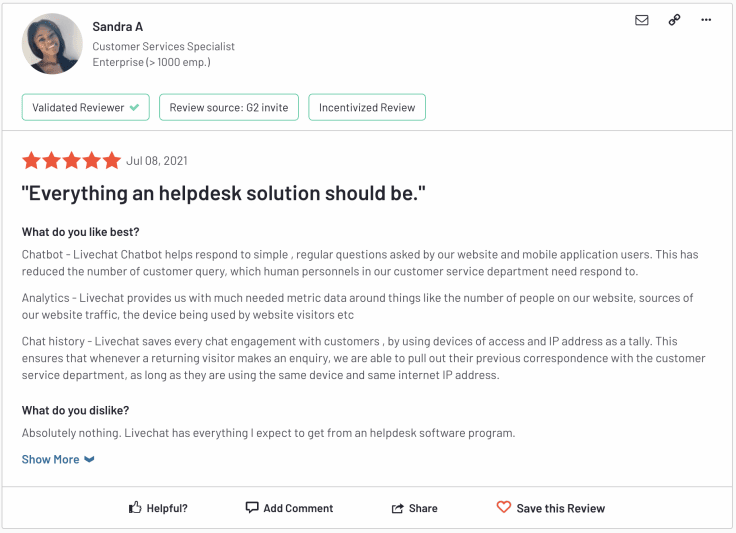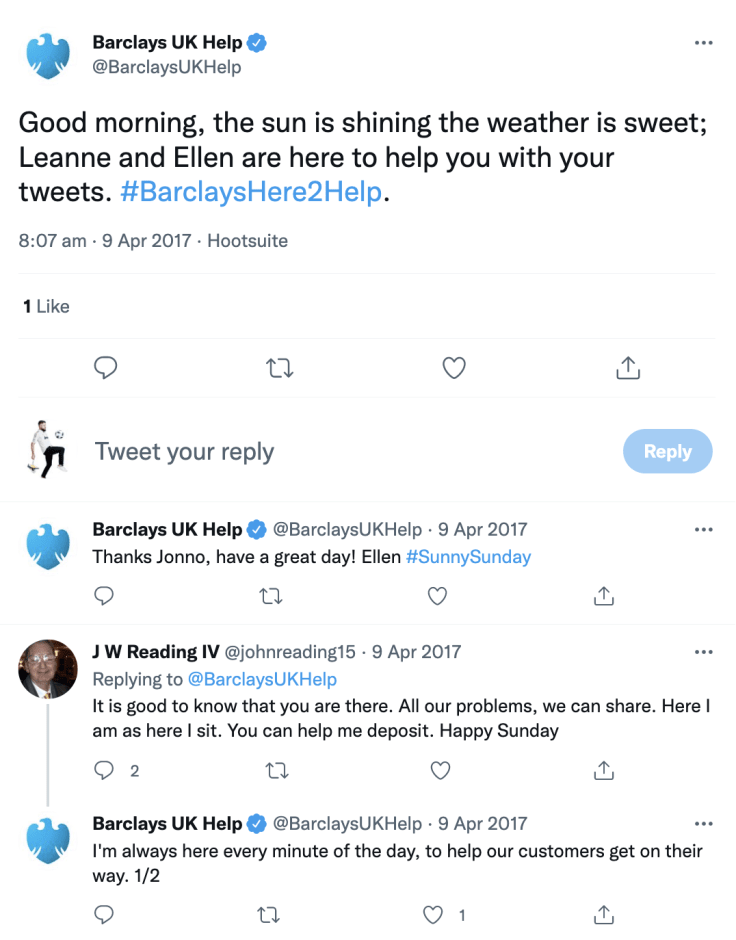Showing top 0 results 0 results found
Showing top 0 results 0 results found

Have you noticed that the most successful brands seem to know practically everything about their customers? Just look at Amazon or Netflix — no one would ever accuse them of not being customer oriented. They put clients at the center of everything they do, which clearly pays off.
I’m going to start today’s article by answering the question, What is customer orientation? I will also explain why it’s worth being customer oriented, and I’ll share a few tactics to make sure your business is client-centric.
What is customer orientation?
Customer orientation is a business approach that prioritizes customer needs over company needs. It requires a high dose of proactivity to anticipate and tackle problems before they escalate. And since business success depends on the ability to understand and satisfy client needs, being customer oriented is a significant success factor!
Why is it worth being customer oriented?
So, why (and how) does being customer oriented pay off? Here are just a few reasons that I’m sure will make you hop aboard.
Higher customer retention
There are many reasons why people become attached to brands, including:
- Perceived product value
- How the brand makes them feel
- Good customer service, etc.
All of the above result from a deep understanding of customer needs and creating products and experiences which revolve around them. If brands put customers at the center of everything they do, clients will have no reason to leave, which will lead to higher customer retention. We dive deep into this subject in a dedicated article on our blog; be sure to check it out.
Better customer success management strategy
There is a clear link between customer orientation and effective customer success strategy management. As customer-oriented companies strive to learn about their clients’ expectations, they automatically collect tons of insights that can fuel their customer success strategy. This can be anything — from learning about the most desired tool integrations, through user flow improvement ideas, all the way through to expected pricing plan adjustments.
For more on this, be sure to give our customer success management strategy piece a read!
More customers from referrals
Do you know what the number one factor is that leads to high customer loyalty and satisfaction? The ability to continuously meet and exceed customer expectations. If customers are happy, they’re more willing to recommend your product or service to others. And we all know that word-of-mouth recommendations are gold. In fact, on average they generate $6 trillion in annual global spending and account for 13% of all sales. Not bad, right?
Working towards a greater purpose than pure revenue
Focusing solely on making money can be a double-edged sword. On the one hand, revenue means growth options, which can create a sense of security and stability for the business. However, without embracing customer orientation, focusing on hitting those sales numbers might only be effective in the short term.
When you continuously seek to understand your clients, you’ll be looking at the greater picture. What do clients want now? How will their needs change if we consider an emerging trend in your industry? These are just some of the questions you’ll answer!
Customer orientation boosts employee motivation
I frequently say that customer success is a team sport. If you make it a company goal, this will have a positive impact on employee motivation. For instance, if your customer support team sees that you’ve used their insights for solving customer problems, their interactions with clients will be more pleasant. They’ll see that their voice in the company is heard and that their hard work and dedication pay off.
I’m sure you’ll agree these are some pretty good perks.
Customer orientation — what does it mean in practice?
To give you a sense of what it takes to become customer oriented, let’s look at two scenarios.
Scenario #1
The first brand offers a product analytics platform to businesses worldwide. The entire company works closely together to keep their customers satisfied. They meet up regularly to exchange their observations and customer insights. On a daily basis, each team engages in the following tasks:
Customer Support
Customer Support is continuously available through a number of channels including live chat, email, and phone calls. Each team member is proficient in the company’s software, which helps them answer questions. They realize that problems can lead to frustration. However, by empathizing with clients and using their knowledge, they can find solutions quickly.
Also, every three months the team runs an NPS survey. If they notice that the score is lower than in the previous quarter, they inform other teams of the occurrence. Together, they identify the reasons for it and seek ways to turn the situation around.
Finally, Customer Support team members understand that education is key to making customers see the product value. That’s why they produce educational content and offer a step-by-step onboarding process, which reduces the learning curve for new clients.
Product
The Product team stays in touch with other departments to collect product-related feedback. They gather feature requests and bug reports from customer-facing teams and consider each when building out the product roadmap.
The team also has a dedicated Customer Research Specialist, who regularly speaks to customers to learn about their needs. Each newly added feature comes from actual client or market research. This helps make the product experience flawless.
Marketing
This team focuses on consumer-oriented marketing. They create both educational and sales copy, which strongly revolves around clients’ needs. In order to decide on the blog content, they run surveys, asking blog visitors what they’d like to read about next.
The entire copy and content circles around customer needs and is written in a tone of voice adjusted to the target audience.
Sales
The sales team interacts with leads through chat or — in the case of enterprise companies — via video calls. They run pre-sales surveys to ask customers about their needs and goals. In doing so, they can prepare themselves for the call. Sales specialists also speak to other teams regularly to exchange insights.

Source: Unsplash
Scenario #2
The second firm sells a CRM. In terms of key business decisions, the company CEO makes the call based on their vision and gut feeling. The entire team is siloed.
Customer Support
The Customer Support team is the only department responsible for customer satisfaction. Whenever there’s a drop in NPS or CSAT surveys, they are held accountable, which makes them feel overwhelmed.
Product
When it comes to product development, instead of seeking customer feedback, all decisions are made based on what the competition does, in an effort to catch up. What are the results? The user experience is off, the product includes a lot of features that are unnecessary and hardly ever used. This leads to a high churn rate.
Marketing
As the Marketing team rarely communicates with other teams, they lack the insights needed to create copy that corresponds to customer needs. This results in a low conversion rate or poor lead quality, which negatively impacts sales.
Sales
The Sales team has a one-size-fits-all approach. As they have few qualified leads, they promise all it takes to seal the deal. While it helps with revenue generation short-term, as the company is unable to deliver on the promises, customers leave. This results in high Customer Acquisition Cost and low Customer Lifetime Value.
Now, here’s the question: Which company from the ones above would you say is customer oriented? Surely, it’s a no-brainer that it’s the first one!
So, how can you follow in their footsteps and get yourself started with customer orientation? Let’s see below!
7 key tactics to make sure that you’re customer oriented
Here are a few strategies you can use to ensure that customers are at the center of your business:
1. Learn what the needs of your customers are
You need to know your customers inside-out. Start off by taking a look into your analytical tools to get a broad overview. Talk to other teams, like sales, customer success, marketing, and product to gain additional insights. Put all the findings into writing and share them with the whole company. After all, being customer oriented is a business philosophy that should apply to the entire organization, not single departments!
2. Regularly collect and listen to customer feedback
To be customer service oriented, it’s vital to regularly seek customer opinions. This will reassure them that you genuinely care about what they think and how they feel. There are different methods you can use to collect customer feedback, including:
- Surveys
- One-on-one conversations
- Social media comments
- Customer reviews on platforms such as G2Crowd, Capterra or Serchen.

Source: G2Crowd
The key is not to stop at feedback gathering but to actually use the findings to improve the customer experience.
3. Engage with customers on social media
According to Sprout Social, social media is the number one channel for connecting and building relationships with customers. This involves liking and responding to comments (even the negative ones), showing off your brand personality, encouraging clients to share your high-quality content, etc. It’s also a great source of inspiration as customers will often mention their likes and dislikes about products and brands; use it to your advantage.

Source: Twitter
4. Show empathy
When speaking to clients, remember that there is a human being on the other side of the screen. Customers get emotional, especially if they experience serious issues with the product that prevent them from achieving their goals. If you show understanding, they will feel reassured and work with you to resolve the problem.
5. Hire the right people
The people you work with make all the difference. It’s not just about having employees with the right skills, it’s also about making sure that they have the right mindset. It’s crucial that they’re dedicated to being customer-focused, instead of focusing on ticking tasks off their to-do list.
6. Make sure your team understands the product purpose
When your team knows how a product works and what problems it solves for clients, they can become better at anticipating customer needs. For example, your sales team members will spot client concerns, ideas, and goals early on in their interactions with leads and run the product demo in a way that addresses them. The same goes for Customer Support, who will feel empowered to advise clients and provide solutions better tailored to their needs.
7. Engage in consumer-oriented marketing
The final tactic we want to share is making sure that you engage in consumer-oriented marketing. To do this, you need access to client data. Do you know what the goals and fears of your target audience are? Why have they decided to choose your product over competing solutions? Having answers to these and other questions will help you create website copy that perfectly addresses customers’ needs and worries. For instance, you might discover that most of your clients are unwilling to provide their credit card details during a trial. This is a very useful insight. You can add “no credit card required” on your homepage to encourage more people to sign up for the free trial.
Customer orientation is the key ingredient to business success
Customer orientation lies at the very basis of each business’ success. It helps you spot client needs and any industry trends early on. Plus, it helps you make sure that you’re always one step ahead of the game. There are many other ways customer orientation pays off, such as:
- Gaining a constant flow of insights for your customer success strategy
- Improving customer retention (thanks to being customer service oriented)
- Getting more clients from referrals
- Boosting employees’ sense of purpose and motivation.
So, how do we get you started? A great point of entrance is diving into your existing client data — for instance, your website and product analytics tools and live chat software. Take these findings and discuss them with your team. High chances are, each department will have their own perspective and unique set of insights to consider.
As customer orientation is a long-term engagement, make sure that you collect data continuously and that each new team member shares your organization’s client-oriented mindset.
Good luck!
Get a glimpse into the future of business communication with digital natives.
Get the FREE report








Comments